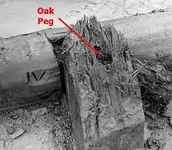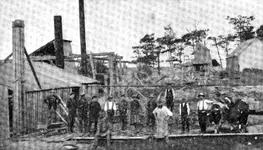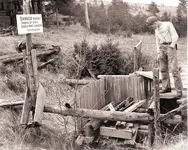sasquash
Sr. Member
- Joined
- Nov 2, 2016
- Messages
- 449
- Reaction score
- 425
- Golden Thread
- 0
- Location
- North of Quebec
- Detector(s) used
- Computers
- Primary Interest:
- Other
18th century Nova Scotian barns had Roman numerals, too. Most timber framed structures built with mortise, tenon and pegs did.
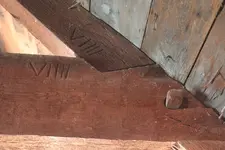
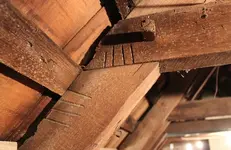
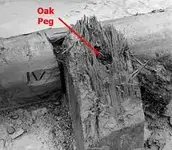

Especially the research about "18th Century Nova Scotian" Freemasons, building with Roman Numerals!
What is interesting is that with a "Timber Framed Structure", they would change the Roman Numeral letter "4" from "IV" to "IIII" and the letter "9" from "IX" to "VIIII , to not confuse it with an upside down "XI".
This was done to avoid confusion when matching up the precut Beams.
View attachment 1558607View attachment 1558610
You will notice that the Beam found on Oak Island has the Roman Numeral "IV".
View attachment 1558612
When the British used Roman Numerals as a "Depth Marker" there was no need to alter the numbers, as no matching up was required.
View attachment 1558615
The number four is represented as "IV" or "IIII", interchangeably. A lot of clocks which use Roman numerals use "IIII" instead of "IV". Maybe people find addition more simpler than subtraction (ie: VIIII as opposed to IX, or IIII as opposed to IV). Looking for Masonic (or whatever) solutions is really reaching.
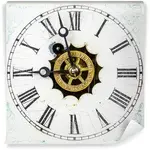

Yes, again to prevent confusion of "Pocket Watches" with the letter "4"..."IV" and "6"..."VI", when viewed in different positions!
View attachment 1558695
One must "Really Reach" in order to find the "Answers"!
View attachment 1558696
I Believe...It is You!...That Has Nothing To Do With...Oak Island!
Posters have been expressing their Own Opinions on this matter...against what are well researched published writer's.
But what does it have to do with oak island? I’m waiting for someone to show the world factual evidence as to whether or not there was ever anything significant about the island and not here to read fictional accounts or theories...
